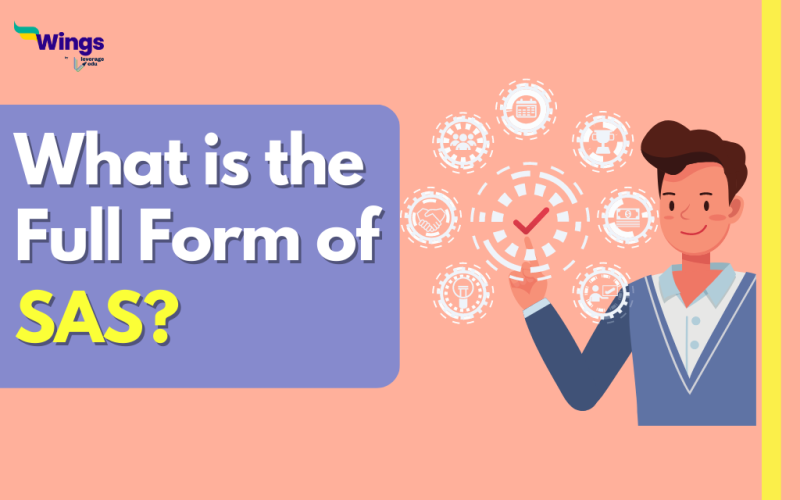SAS Full Form: SAS stands for Statistical Analysis Software. SAS is a software technology platform established by SAS Inc. for advanced analysis, multivariate assessment, trade insights, knowledge management, and predictive analytics.
SAS is a useful programme. It can view, alter, and analyse data from a variety of sources. Users will use the if-then definition in SAS to perform clear actions. You will be able to perform any articulation in SAS stepwise, in a loop, and the software is really quick.
History of SAS
Table of Contents
- SAS’s expansion began in 1966 and lasted until 1976, when James Goodnight, Anthony Barr, Jane T. Helwig, and John Sall co-founded SAS.
- During the 1980s and 1990s, SAS became more inclusive with the incorporation of new statistical approaches, additional components, and JMP.
Features of SAS
- SAS provides a wide range of customer intelligence tools for marketing analytics, social media, web browsing, and other applications. It’s used to create client profiles, forecast their behaviour, and optimise communication accordingly.
- The SAS Fraud Framework detects irregularities and signs of fraud by monitoring transactions across several applications and networks.
- By delivering scenario analysis and risk modelling, the Enterprise GRC (Governance, Risk, and Compliance) solution aids in the management and visualisation of risk and compliance.
- SAS IT Management Solutions aid in the management of IT systems. It collects data such as IT asset performance and utilisation, examines the data, and generates reports.
- Individual, team and organisational key performance indicators are provided in a graphical manner by the performance management solutions.
Benefits of SAS
SAS, or Statistical Analysis System, is software that allows you to perform statistical analysis on data. It offers numerous advantages, including the following:
- The SAS is simple to operate. The graphical user interface (GUI) is simple to use, and you can perform complicated analyses with a few mouse clicks.
- The SAS is extremely effective. It is capable of handling massive amounts of data and performing a variety of statistical analytic tasks.
- The SAS works quickly. It can examine data swiftly and offer results in a timely manner.
- The SAS is trustworthy. It is known for being a solid and dependable software application.
Limitations of SAS
- One of the most significant downsides of SAS software is its high cost. We are unable to use any of its functions without a costly licencing.
- Graphics are portrayed much more convincingly and precisely than SAS. R is more user-friendly for complex images. It includes a story, a graph, and a map, in addition to other photographs.
- SAS strategy measurement is not permitted in the community since SAS is a closed software environment with no open access.
Types of SAS
Statistical Analysis systems are classified into three types:
- Base SAS: It is the foundation. This is the most fundamental type of SAS, and it is appropriate for elementary analytical tasks.
- SAS/STAT: This is a more powerful version of SAS that can handle more sophisticated analytical tasks.
- SAS/GRAPH: This is a form of SAS used to generate graphical reports.
Must Read: What is the Full Form of GPT?
Must Read: What is the Full Form of CMP in the Share Market?
We hope this has helped you to gain information about SAS. Do you want to know more full forms like this? In the world of short forms, you can rely on our page to know more! Get in touch with our study abroad experts to achieve your international dream today!
 One app for all your study abroad needs
One app for all your study abroad needs













